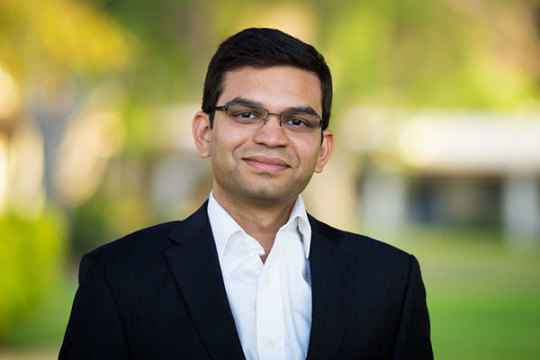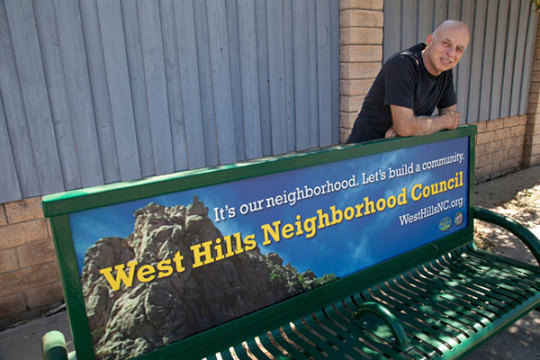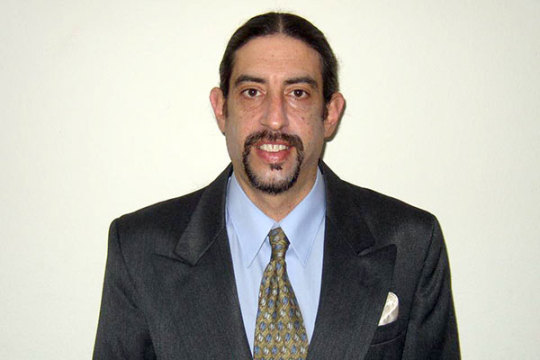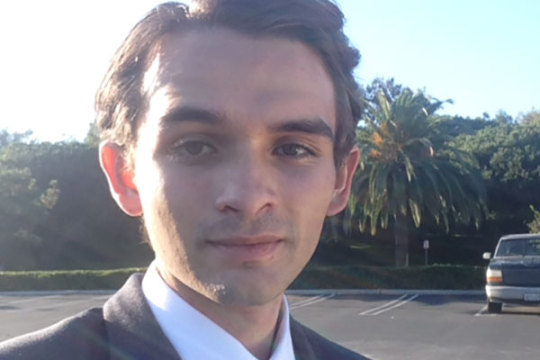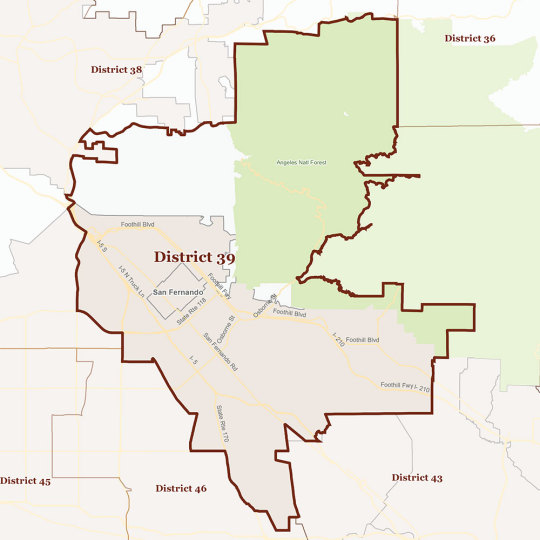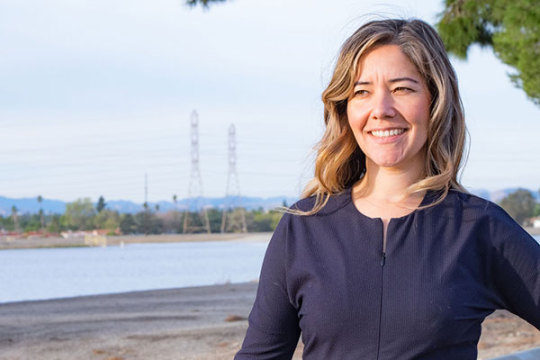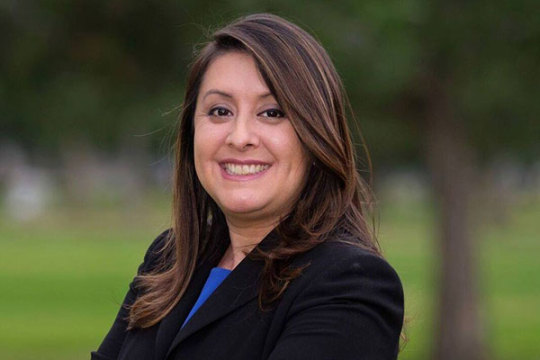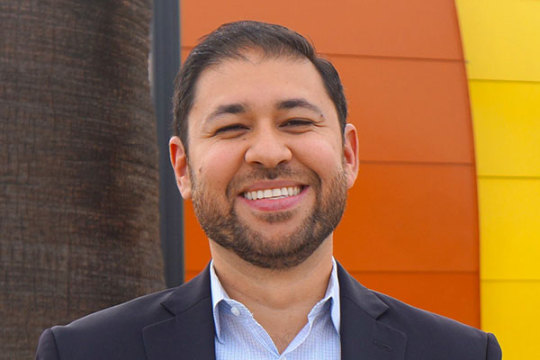
Candidate campaign page: http://www.tricia4assembly.com/
Tricia Robbins Kasson serves as the Economic Development Director to Councilmember Bob Blumenfield (who Bike The Vote L.A. endorsed in 2017). She served as the point person for Blumenfield for the LA Great Streets Sherman Way project, which sought to improve the pedestrian experience within the Reseda commercial stretch. Her response to Bike The Vote L.A.’s questionnaire shows a deep understanding of the connections between safe streets, quality transit, affordable housing, and greenhouse gas reductions. With her commitments to improve funding for active transportation and to prioritize safety, Robbins Kasson would serve as an effective advocate for safe streets in the Assembly.
Bike The Vote L.A. 2018 Primary Grade: A-
(See below for full candidate questionnaire response)
1. The California Air Resources Board estimates that transportation accounts for 37% of California’s annual carbon emissions. What actions would you take as assemblymember to ensure that California creates a more sustainable transportation system?
In California’s urban areas, including the 45th Assembly District, the issue of sustainable transportation is inextricably intertwined with other issues. California’s affordable housing crisis means that working families face long commutes that make transit, walking, or biking infeasible. In the West San Fernando Valley, much of our peak-hour congestion is caused by commutes from Western Ventura County, Simi Valley, and the Antelope and Santa Clarita Valleys. I will work to make it easier to create middle income housing to relieve this kind of transit. Similarly, I will ensure that our schools and community colleges are adequately funded and provide quality education, so parents can send their children to schools within a walkable or bikeable distance.
While most land use decisions are local, as an Assemblymember I will promote land use policies such as those in the Warner Center 2035 plan, which I helped to develop and implement, that focus intensive development in concentrated areas that are well-served by high-quality transit.
For major highway and transit projects, I will work to ensure that Caltrans and other agencies focus on providing access for all transportation modes along the corridor, instead of focusing narrowly on the specific project. For example, in $1B widening of the 405 through the Sepulveda Pass (which did not reduce peak-hour congestion at all), a small portion of that funding should have been used to construct continuous bike lanes through the Sepulveda Pass.
I will work to ensure adequate funding for the Active Transportation Program, and to secure necessary funding for the Los Angeles River Valley Bikeway.
I grew up in the San Fernando Valley, and used transit, biking and walking to get to school, parks, libraries and other places.
2. Cap & trade funds offer a unique opportunity to prioritize sustainable transportation, particularly in low-income neighborhoods negatively affected by pollution caused by cars. Do you support dedicating a portion of cap and trade funds towards the Active Transportation Program to help fund better pedestrian and bicycle infrastructure?
Yes. Unfortunately, the funds generated by the state’s cap and trade program do not begin to meet the demand for worthwhile greenhouse gas reduction projects and programs. Nevertheless, it is unacceptable that, since the beginning of the cap and trade program, only $10 million (out of more than $4 billion) has been dedicated to the Active Transportation Program. Because bicycle infrastructure projects, in particular, often require design modifications during the planning and implementation process, it is important to have funding sources that are better able to accommodate such changes (which federal funding sources often do not). A dedicated source of State funds for active transportation will become increasingly necessary as Republicans in Washington DC seek to roll back or eliminate federal funding for such projects.
3. In Los Angeles, low-income communities of color are disproportionately burdened by the impacts of streets designed primarily for cars, without receiving proportional funding for their mobility modes like walking, biking, and public transit. Would you support legislation to add a ‘complete streets’ policy to SB 1, California’s newly augmented gas tax, to require all street and highway projects to incorporate the needs of pedestrians, bicyclists and transit-dependent communities?
I strongly support complete streets policies, and believe that our overall transportation network must better incorporate the needs of those who walk, bike and use transit. I do not, however, support a blanket policy of requiring every individual project funded from SB1 to be designed to incorporate pedestrian, bicycle or transit facilities. California is a huge state, with widely-diverse transportation needs. In rural, mountainous areas, designing and constructing a highway project to accommodate pedestrians—where there are none—could involve a significant expense with no real benefit, which diverts funds from real needs elsewhere. On a local level, in the 45th District, Victory Boulevard runs across the San Fernando Valley, close to (and often adjacent to) the Orange Line and LA River bike paths, and it would not be a prudent use of funds (or sound policy) to include bicycle facilities should Victory be reconstructed under SB1.
This question strikes a larger point: how we ensure that the infusion of SB1 funds to address long-neglected infrastructure needs is used to create a more inclusive transportation network, and not merely re-create a solely auto-oriented system. The Complete Streets Act requires local jurisdictions to develop multimodal networks in the circulation element of their General Plans. There are, however, few tools to ensure compliance with those plans. While every project might not need to be a “complete streets” project, every SB1-funded project should comply with the local circulation element. Also, every project on a street with a bus route should include elements to incorporate the needs of transit users. Local jurisdictions should be required to report on their progress toward implementing their complete streets networks, similar to reporting on their progress toward the Regional Housing Needs Assessment.
4. California law regarding the position bicyclists can occupy in a traffic lane is written in a confusing manner. The typical condition – in which the rightmost lane is too narrow for a car and a bicycle to travel safely side-by-side and the bicyclist is thus allowed to use the full lane – is written as an exception rather than the default standard. As a result, despite public information campaigns such as “Every Lane Is A Bike Lane,” there is frequently confusion from the general public and even law enforcement agencies on the legality of bicyclists riding in traffic lanes on California roads. Do you support re-wording traffic law to clarify the right of people on bikes to ride to maximize their visibility and safety?
Yes. California’s traffic safety laws should be written in plain English so they can be easily understood by the public, whether they are driving or bicycling, and easily enforced by law enforcement personnel. On nearly all streets in the 45th Assembly District, the curb lane is too narrow for a motorist and bicyclist to share. However, the existing language of Vehicle Code section 21202, which requires people on bicycles to “ride as close practicable to the right,” is dangerous. It encourages people on bicycles to weave in and out of traffic around parked cars, to ride in the “door zone” too closely to parked cars, and generally make themselves less visible and less predictable to those driving motor vehicles. Conversely, it also encourages people driving to pass those on bikes too closely, in violation of Vehicle Code 21760, and leads to harassment of people on bicycles. It is all too uncommon for a driver to yell “ride to the right” as they buzz by a vulnerable person on a bicycle. I support Vision Zero efforts to eliminate traffic fatalities and reduce serious traffic injuries.
5. A recent study by the National Transportation Safety Board found that speeding was one of the most common factors in crashes, and one of the highest contributors towards fatal crashes. Despite this fact, speed limits across California are consistently raised due to a state law that sets speed limits at the 85th percentile of measured driving speeds. Do you support reform to the 85th percentile rule to give local jurisdictions the ability to set speed limits to better promote safe driving?
I would support a pilot automated speed enforcement program in California. Street racing and excessive speeding are a serious problem in the 45th Assembly District, where there are many broad, straight streets with widely-spaced traffic signals and (outside rush hour) relatively low traffic volumes. Recent multiple-fatality collisions include a November 2016 crash in Woodland Hills adjacent to a schoolyard full of children, and a June 2016 crash in a thriving commercial district on Ventura Boulevard. In the West San Fernando Valley, the Los Angeles Police Department does not have sufficient resources to devote to traffic enforcement and excessive speeding.
However, there are legitimate questions about the effectiveness of ASE, including how well it works on busy suburban streets (as opposed to limited-access highways), the amount over the speed limit that would trigger a ticket, and whether deployment at limited locations increases traffic volumes or speeding to parallel streets; privacy concerns regarding the manner in which data is collected and stored; and whether ASE would be deployed solely to maximize safety and not to generate revenue. Such questions should be addressed through a well-designed pilot program, before widespread implementation takes place.
6. California’s ongoing housing crisis challenges cities and communities to provide solutions towards meeting California’s demand for housing. Do you support efforts at the state level to accommodate smart growth, transit-oriented development, and sustainable communities that empower residents to get around on foot, by bike, and on quality public transit? What specific policies you would pursue to promote sustainable and affordable living for Californians?
California’s housing crisis must be addressed, and that can best be done by adopting policies that make it easier to build more housing, in appropriate locations. It is especially important to facilitate the construction of “missing middle” housing that is affordable to hard-working families who make too much to qualify for subsidized housing and cannot afford luxury housing. I strongly support policies that allow for more housing to be built near high-quality transit, and in areas with a concentration of stores, restaurants, services and other amenities that can be accessed by walking or bicycling. I am especially proud of my work in developing and implementing the Warner Center 2035 Specific Plan, which allows for intensive development in an area that is well-served by the Orange Line and other transit, and includes plans for improving walking, biking and a local transit circulator.
The Warner Center 2035 Specific Plan should be a model. Importantly, it is also an example of a policy that respects local control over land use issues. It was adopted through extensive community engagement in which many local residents came to accept intensive development at the Warner Center in exchange for a promise that the City of Los Angeles would protect low-density suburban neighborhoods. By preempting local control in areas, like Woodland Hills, that are meeting the need for additional housing and growth, SB 827 goes too far, at least as currently written.

